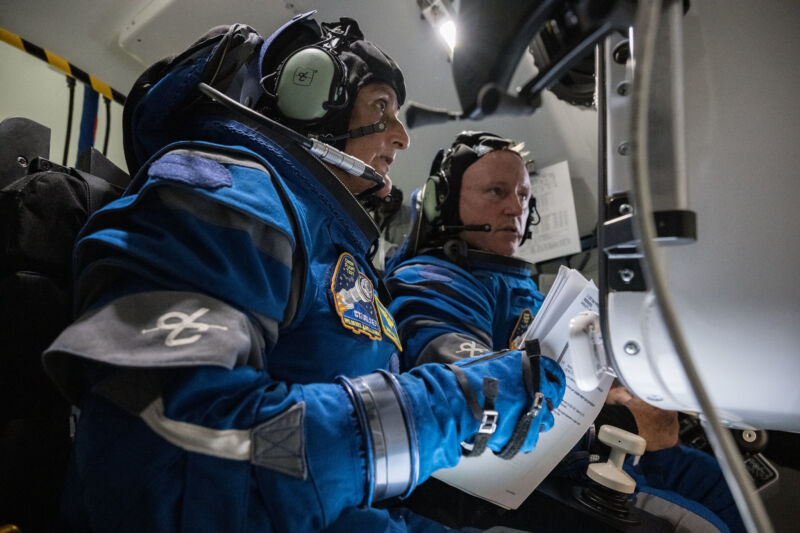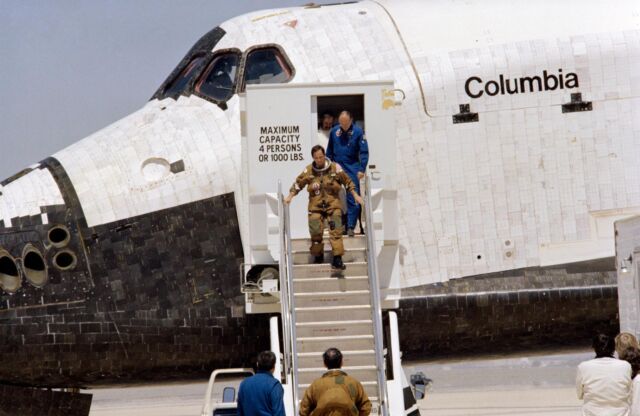
If you want to know what it's like to take a new spacecraft on its first test run in orbit, there are only three people in the Western world you can call.
That fact should drive home the rarity of debuting a new human-rated spaceship. When Boeing's Starliner capsule lifts off Monday night, this group of three will grow to five. Veteran NASA astronauts Butch Wilmore and Suni Williams, both former US Navy test pilots, will be at the controls of Starliner for the ride into low-Earth orbit atop a United Launch Alliance Atlas V rocket.
"The first crewed flight of a new spacecraft is an absolutely critical milestone," said Jim Free, NASA's associate administrator. "The lives of our crew members, Suni Williams and Butch Wilmore, are at stake. We don’t take that lightly at all."
Launch is set for 10:34 pm EDT (02:34 UTC), and NASA TV's coverage begins at 6:30 pm EDT. You can watch below.
After liftoff from Cape Canaveral Space Force Station in Florida, Wilmore and Williams will monitor Starliner's systems and take over manual control for a few piloting tests as the spacecraft autonomously approaches the International Space Station. Assuming the launch happens Monday night, docking at the space station is scheduled for early Wednesday. Starliner will remain in orbit at least eight days, with the earliest opportunity to undock and land set for May 15.
"It’s a test pilot’s dream—everything we’re doing from start to finish," Wilmore said.
If you start the clock from the day Boeing announced the Starliner program in 2010, this moment is running nearly 10 years behind the company's original schedule.
"It’s a little bit of an emotional roller coaster as things were getting fixed, or you see a couple steps back, but then you see a couple steps forward," Williams said. "We're at that point now. We knew we would get here eventually. It's a solid spacecraft."
A test pilot’s dream
Wilmore, 61, is a native of Tennessee. He will take the left seat in Starliner's cockpit as the commander of the Boeing test flight. Williams, 58, grew up in Massachusetts and will serve as Starliner's pilot. Both astronauts have flown to space twice before and have launched and landed on the space shuttle and Russian Soyuz capsules.
They are set to join a small club of astronaut test pilots who have hands-on experience piloting a new type of spacecraft in orbit for the first time. Astronauts Doug Hurley, Bob Behnken, and Bob Crippen are the only three Americans alive who can make that claim. Hurley and Behnken flew on the first astronaut mission on SpaceX's Dragon spacecraft, and Crippen piloted the first space shuttle mission in 1981 alongside commander John Young, who died in 2018. Yang Liwei, the first astronaut to fly on China's Shenzhou spacecraft in 2003, rounds out the global club.
Ars spoke with Hurley, Behnken, and Crippen in the days before the first crew flight of Boeing's Starliner spacecraft.
"It's a unique opportunity to get to fly a brand-new spaceship, which is awesome," Hurley said. "Those don't come around very often."
Hurley and Behnken retired from NASA's astronaut corps after their 2020 mission and now work for Northrop Grumman and Lockheed Martin. Crippen, now 86, left the agency in 1995 after a stint as director of the Kennedy Space Center in Florida.
This will be the first time anyone has ever flown on Starliner, and the first crew launch aboard an Atlas V rocket. The Atlas V's 99 previous flights have all lofted satellites or deployed NASA probes heading into deep space. Hurley and Behnken's flight with SpaceX in 2020 was on the 85th launch of a Falcon 9 rocket.
Crippen's experience was vastly different. The space shuttle never launched without people in it, and the first flight of Columbia, known as STS-1, might have been the riskiest mission ever undertaken by NASA. In retrospect, NASA officials calculated there was a 1-in-12 chance that a catastrophic failure on the STS-1 mission could have killed the crew.
"Butch and Suni are going up on the Atlas V, which is a pretty reliable booster, whereas John and I had a completely experimental spacecraft," Crippen said. "They both are very experienced astronauts, and they're well-qualified to do this."

Crippen met with the Starliner crew at the space center in Florida a few months ago, when he got a chance to see the Starliner spacecraft up close. “Seeing it reminded me a lot of the command module we had from Apollo," he said.
The first Starliner crew has trained together nearly four years. Wilmore replaced the mission's original commander in 2020, and Williams has been assigned to the Boeing commercial crew program since 2018.
"My advice is know the spacecraft as well as you can," Crippen said. "I think they're well prepared. They've had a considerable amount of time ... with the delays they've had."
reader comments
144